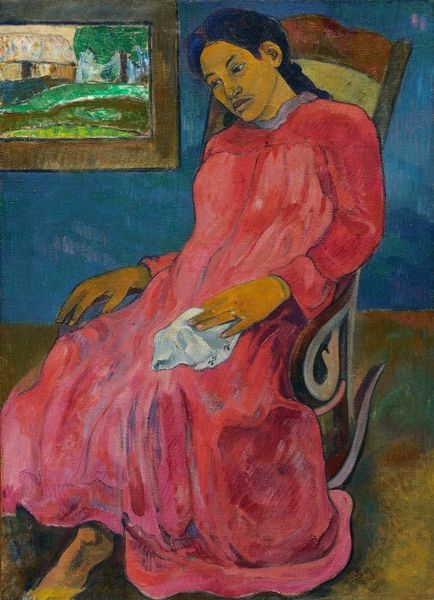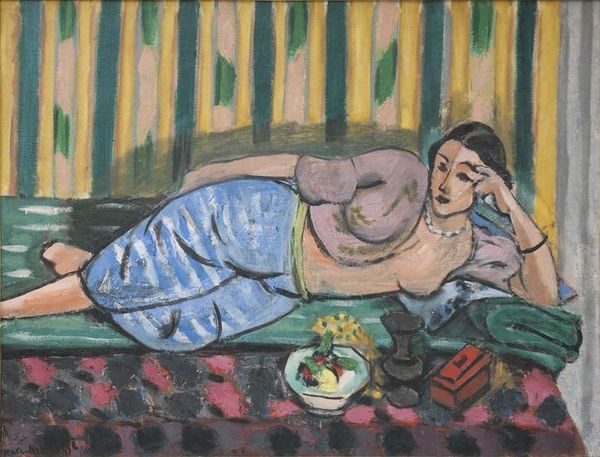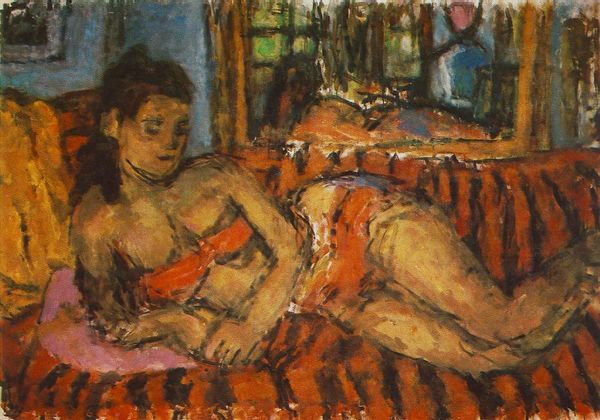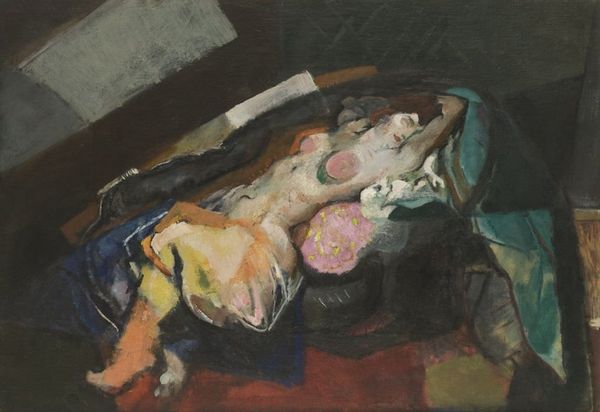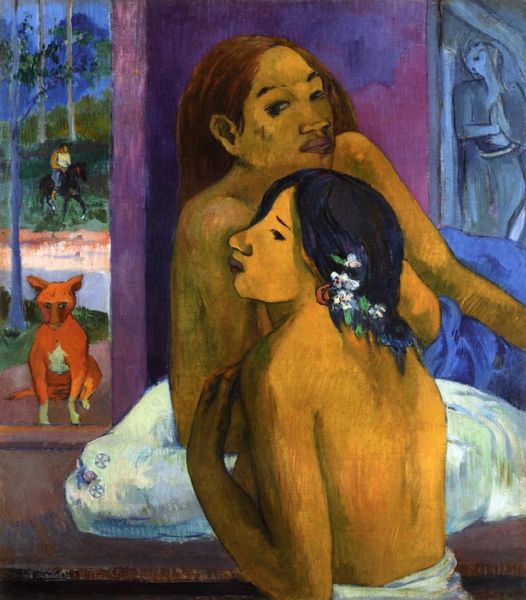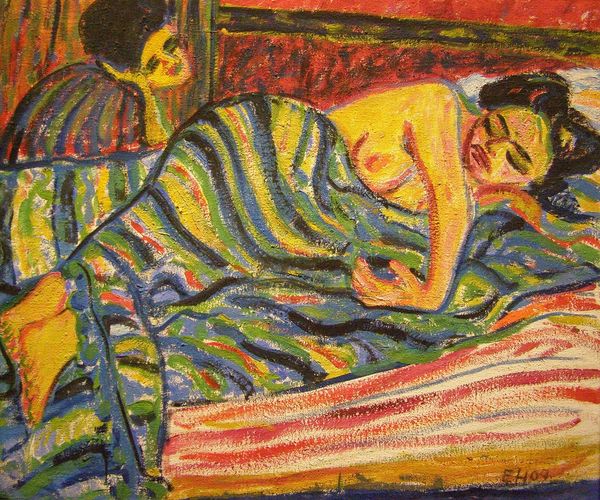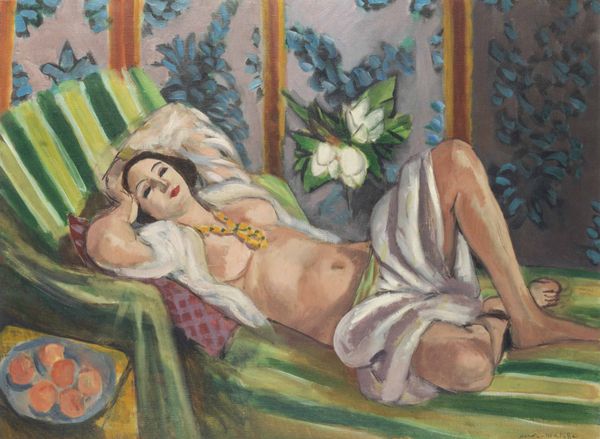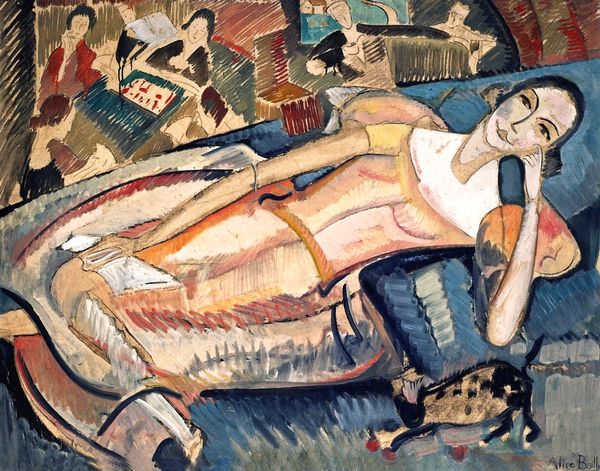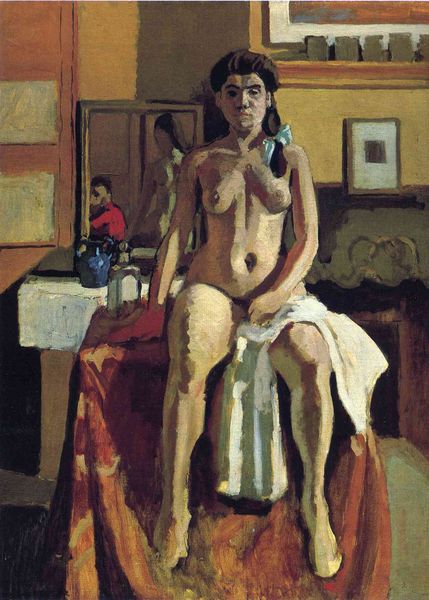
painting, oil-paint
#
portrait
#
figurative
#
painting
#
oil-paint
#
painted
#
figuration
#
oil painting
#
symbolism
#
post-impressionism
#
nude
#
erotic-art
Copyright: Public Domain: Artvee
Curator: This is Paul Gauguin’s “Arii Matamoe,” painted in 1892 using oil on canvas. It presents quite a disturbing image, doesn’t it? Editor: Absolutely unsettling. The severed head… it's rendered in such meticulous detail against the flat planes of color, the rich texture of the oil paint seems to emphasize the violence. What are we meant to feel confronted by this, though? Curator: It certainly pushes boundaries. Gauguin positions the Tahitian woman in a fraught space – a literal still life of the ‘exotic’ other, particularly given colonial narratives that surround the male gaze and power imbalances within sexual objectification. The title refers to Arii, meaning chieftain, and Matamoe, meaning sleeping eyes. Editor: He's appropriating materials here: both pigments and, more offensively, bodies and cultural iconography, I'm especially drawn to the vibrant palette – the juxtaposition of the dark head against those floral arrangements. Curator: Exactly, that’s part of the unsettling paradox he creates. The backdrop almost appears cheerful at first glance, with domestic, and stylized motifs. We see a scene within a scene… Figures placed amidst the architecture, maybe symbols, framed by an abstract treatment to their skin and garments… This reflects Gauguin’s exploration of primitivism. The composition’s very structure raises important questions around how Western art appropriates and often misrepresents non-Western cultures. Editor: "Primitivism" being code for exploiting labor and materials to construct a fantasized 'escape' for a Western, primarily European, audience, masking its brutality with superficially 'exotic' details like those jarring flower choices beside what's supposed to be some tribal chieftain’s head resting like an offering. Curator: I agree it’s vital to challenge that romanticized primitivism. By placing a stark image of execution beside stylized figures within Tahitian iconography, he presents viewers with a visceral tension. Editor: Ultimately it is impossible to divorce the physical production and raw materials that compose an artwork like "Arii Matamoe" from its legacy within discussions about representation and how this informs the ethics surrounding making and interpretation. Curator: Indeed, and looking at Gauguin through the critical lenses we now possess encourages essential, crucial discussions about appropriation, representation, and colonial legacies within art history.
Comments
No comments
Be the first to comment and join the conversation on the ultimate creative platform.
